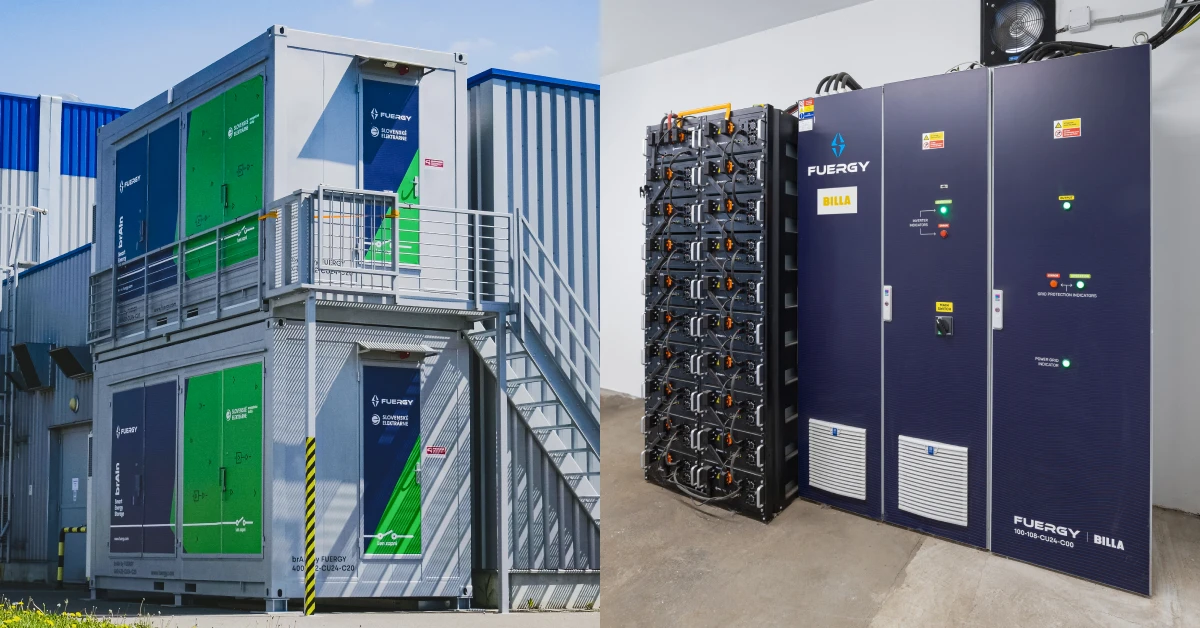
In the first part of the series Choosing Battery Storage for Your Business, we discussed the importance of defining clear expectations for your battery storage utilization. In this article, we'll look at how to determine the optimal capacity of battery storage for your business, including choosing the appropriate battery type and its location.
Determining storage capacity
Battery storage systems are modular and offer the ability to customize the capacity of the unit to the exact specifications and requirements of each client.
In order for your business to use energy as efficiently as possible and to maximize cost savings, the proper size of the battery storage needs to be determined first.
Energy analysis
The design of the storage capacity is always preceded by a complete energy analysis of the operation, during which the battery storage supplier should examine your electricity consumption diagram, the reserved capacity and the maximum reserved capacity.
To perform an energy analysis, 15 minutes of your company's electricity consumption data from the most recent calendar year (e.g., Jan. 1 to Dec. 31) is required. This can be provided by your electricity supplier on request.
Need help with an electricity consumption analysis? Leave us your contact details and our experts will get back to you.
Company energy needs
There are also other factors that influence storage design. It is true that the capacity of the storage must be sufficient to meet the company's energy needs and expectations, however, factors like the use of the storage as a backup power source or UPS, as well as the possibility of storing solar surpluses from local solar panels must also be taken into account.
In fact, a properly sized battery storage with an efficient energy management system (EMS) can manage all solar energy produced without creating surpluses and partially also provide micro power outage protection for critical equipment.
However, the capacity should not be excessively large, which can mean higher upfront costs and potentially inefficient use of the investment if the system is not fully utilized. Conversely, a system that is too small will not take full advantage of its energy potential.
Consider not only your current energy needs, but also future energy needs, taking into account any planned growth or expansion. The ideal storage system should provide flexibility for future expansion of operations or installation of green energy sources. It should also be able to manage energy flows efficiently, ensuring optimal energy production and consumption while reducing operating costs.
The brAIn by FUERGY smart battery storage system is highly modular and can be expanded as your business grows. Read more about how brAIn smart battery storage works.
Secure battery storage location

The location and setup of the battery storage depends on several factors:
- Distance from the main switchboard: the battery storage should be located as close as possible to the main switchboard. The further the storage is from the switchboard, the more cabling is required to connect it, which requires additional work and can increase costs.
- Available space: whether the battery storage will be placed indoors or outdoors will be determined by the size, load capacity and space in the building or on the property. If there is insufficient indoor space, the battery storage shall be placed outdoors. When placing the storage indoors using a LiFePO₄ (lithium iron phosphate) battery from Pylontech, there is no need to fabricate a special enclosure to protect the equipment, which can result in some cost savings. In fact, Pylontech batteries meet the highest safety and fire protection standards.
- Cooling and ventilation: the storage location also depends on the ability to effectively manage the temperature of the batteries. Indoors, it is important to have a properly designed cooling system that keeps the batteries within the optimal temperature range. Adequate ventilation or access to fresh air is essential for effective battery cooling. If the room where the battery storage is to be installed does not provide sufficient ventilation and cooling, a cooling system needs to be installed.
- Safety regulations: Local safety regulations may determine where battery storage can be installed, including necessary clearance from buildings and other structures.
- Battery type and characteristics: At FUERGY, we only use LiFePO₄ batteries in our battery storage systems - which are less susceptible to overheating - from Pylontech (used indoors and outdoors) and Huawei (used outdoors).
When selecting the optimal location, it is important to strike a balance between technical capabilities, security requirements and cost, allowing the battery storage to perform with maximum efficiency and optimized performance.
FUERGY, as the only full-service energy-technology company in Slovakia, provides the entire battery storage implementation process, from energy analysis through installation to service and maintenance.
Battery storage safety
Remember that the right selection and implementation of battery storage can make a significant contribution to energy efficiency, reduced operating costs and increased sustainability for your business.
Despite the undeniable benefits of battery storage, such devices can be associated with potential security risks. We will discuss the safety of battery storage, as well as the most commonly used batteries in detail in the next part of our series.
Need help clarifying expectations? Let us know and take advantage of a free consultation. Our experts will get back to you and, if you'd like, prepare a tailor-made solution for you.
New dimension of energy optimization





